Private James Rainey
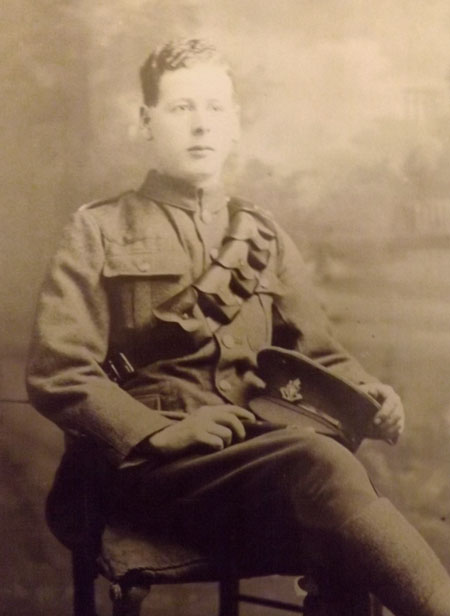
James Rainey was born on 26 May 1892 at Braniel, Castlereagh, Belfast, the first of three children of gardener and labourer James Rainey and his wife Mary (nee Greer). By 1911 he was living at the Grand Central Hotel in Royal Avenue, Smithfield, Belfast, where he worked as a floor porter.
Rainey enlisted in the North Irish Horse on 21 September 1915 (No.1729 – later Corps of Hussars No.71525), training at the regimental reserve depot at Antrim. He embarked for France in March or April 1916, where he was posted to A, D or E Squadron of the North Irish Horse. In May 1916 these squadrons came together to form the 1st North Irish Horse Regiment, serving as corps cavalry to VII, XIX then V Corps.
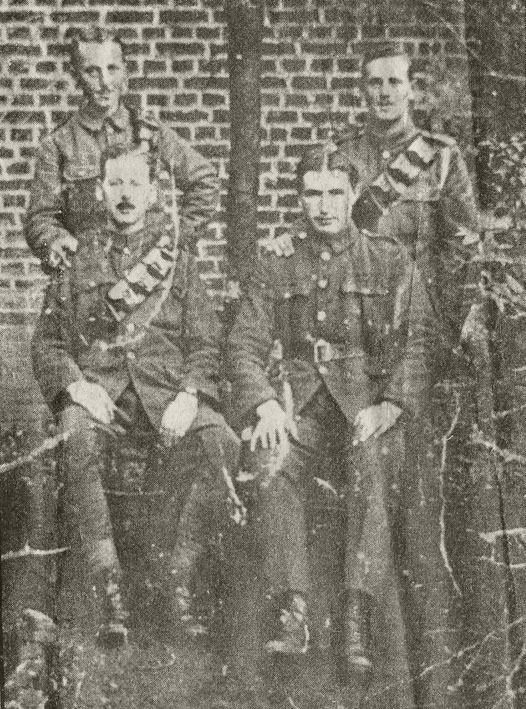
Rainey (seated left) with fellow Horsemen at Pas, near the Somme front, about August 1916
Rainey was still with the 1st North Irish Horse Regiment in February-March 1918, when it was converted to a cyclist unit, serving as corps cyclists to V Corps until the end of the war. (Seventy years later he recalled the feelings of the regiment at this reduction of their status: “We were re-issued with bicycles, a terrible thing for a Cavalryman!”)
As cyclists the regiment saw action during the German spring offensive, beginning on 21 March. Rainey was wounded by shrapnel in the right hand during the fighting. The regimental diary for 23 March states:
Regiment retired to Morlancourt. No. H/71525 Pte Rainey J. H/71529 Pte Loughlin J. Wounded.
The following day he was treated at No.149 (Royal Naval) Field Ambulance at Fricourt, before being evacuated to a casualty clearing station.
Rainey recovered from his wound and by August was back with his regiment, which was then with V Corps on the Somme front. On 21 August 1918 the Advance to Victory offensive began in that sector. Once again the North Irish Horse cyclists saw much action. From 21 to 31 August they lost seven other ranks killed and one missing believed killed, and two officers and 25 other ranks wounded.
Private Rainey was one of the wounded. On 27 August he was admitted to No.34 Casualty Clearing Station with shrapnel wounds to his back, right arm and right leg. He was then evacuated to the UK, where he was treated at the Royal Victoria Hospital in Netley, near Southampton, and later in a Dublin hospital. He recuperated in the Ulster Volunteer Hospital in the grounds of Queens University in Belfast.
In mid-1919 the North Irish Horse base depot was temporarily moved to the Curragh while the process of discharging the men continued. Rainey, still recuperating, was attached to the No.2 Reserve Cavalry Regiment. On 19 September 1919 he was discharged as being no longer physically fit for war service (paragraph 392(xvi) of King's Regulations). (Another record states this as 19 January 1919, but this appears to be an error.) Soon after he was awarded a disability pension as a result of his wounds.
After the war Rainey worked as a bread server. He married Florence Ethel May at St Nicholas Church, Belfast, on 26 September 1922. He died in England on 30 October 1986.
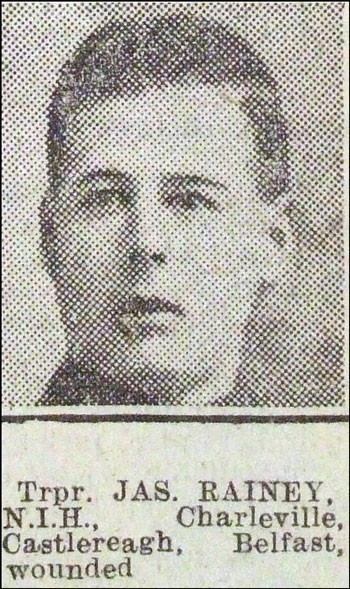
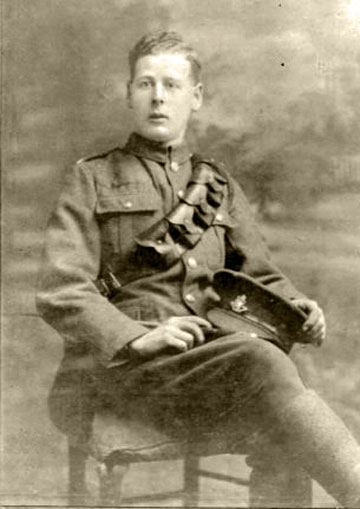
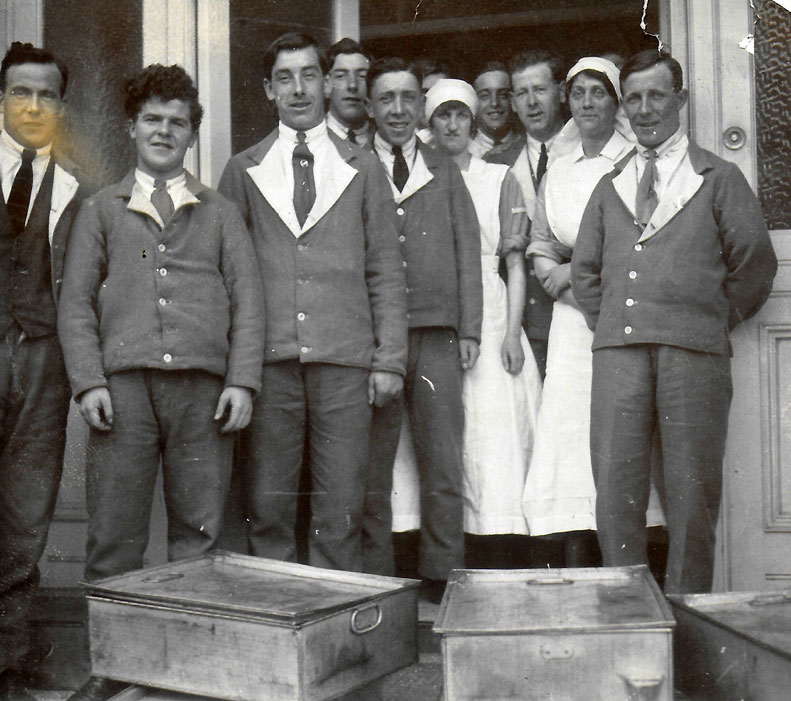
Rainey (third from right) at the UVF Hospital, Belfast, in 1919.
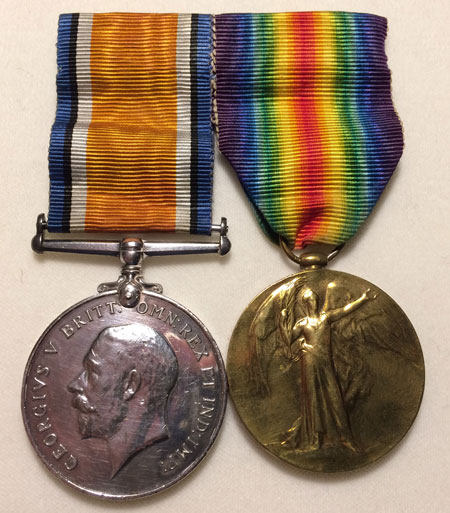
Rainey's medals
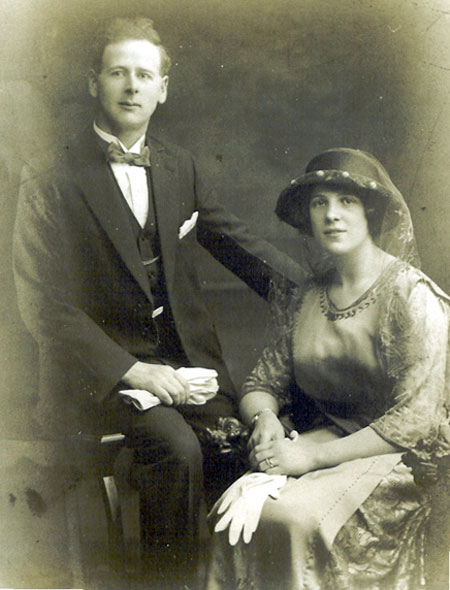
On his wedding day, with Florence Ethel May, 26 September 1922.
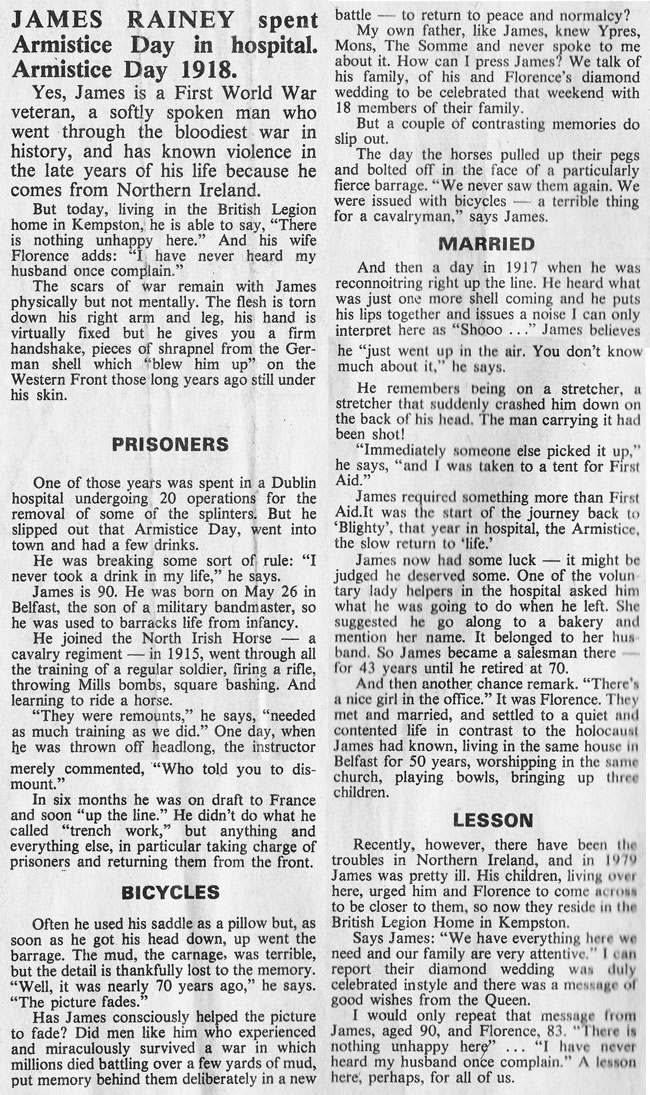
Newspaper article, 11 November 1982.
First image kindly provided by William Gordon. Third image from the Belfast Evening Telegraph kindly provided by Nigel Henderson, Researcher at History Hub Ulster (www.greatwarbelfastclippings.com).
I am grateful to Private Rainey's grandson Colin Gilbert, and Rainey's nephew Denis Stanley, for making available all other images on this page, together with some of the information above.
